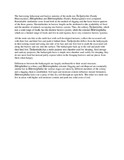Burrowing and burrow patterns of East African mole-rats Tachyoryctes, Heliophobius and Heterocephalus

View/
Date
1971Author
Jarvis, Jennifer UM
Sale, John B
Language
enMetadata
Show full item recordAbstract
The burrowing behaviour and burrow patterns of the mole-rats Tachyoryctes (Family Rhizomyidae), Heliophobius and Heterocephalus (Family Bathyergidae) were compared. Remarkable similarities were found both in the method of digging and the basic burrow pattern of the three genera. Dissimilarities in burrow length can be attributed to the availability of food and the number of animals occupying one burrow system. Thus, the solitary Tachyoryctes, which eats a wide range of foods, has the shortest burrow system; while the colonial Heterocephalus, which eat a limited range of foods and live in arid regions, have very extensive burrow systems.
All the mole-rats bite at the earth face with well developed incisors; collect the excavated soil with their fore and hind feet and push it behind them. Tachyoryctes differs from the bathyergids in then turning round and using one side of its face and one fore foot to push the excavated soil along the burrow and out onto the surface. The bathyergids back up to the soil and push with their hind feet. Tachyoryctes has a multi-purpose nest chamber used for sleeping, food storage and sanitary purposes; the bathyergids have a simple nest chamber used solely for sleeping, they do not store food but instead partly expose tubers in the foraging burrows and eat pieces from them when hungry.
Differences between the bathyergids are largely attributable to their social structure; Heliophobius is solitary and Heterocephalus colonial. Digging and soil disposal are essentially similar but in Heterocephalus the various stages are taken by different members of the colony and a digging chain is established. Soil type and moisture content influence mound formation; Heterocephalus kicks out a spray of fine dry soil through an open hole. The other two mole-rats live in areas with higher soil moisture content and push out solid cores of soil.
URI
http://onlinelibrary.wiley.com/doi/10.1111/j.1469-7998.1971.tb04544.x/abstracthttp://hdl.handle.net/11295/91324
Citation
Journal of Zoology Volume 163, Issue 4, pages 451–479, April 1971Publisher
University of Nairobi
